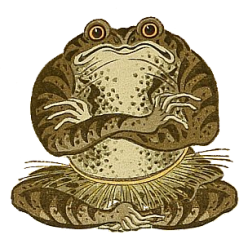PYONGYANG (Reuters) – In
North Korea, it may be a crime to speak ill of the Dear Leader, but visitors are also advised not to badmouth the beloved national dish.
“Kimchi can prevent
SARS and bird flu,” a North Korean official told reporters at a dinner in a state-owned restaurant in Pyongyang, urging them to spread the word around the world.
Kimchi, typically radish or cabbage that has been packed with garlic, ginger and hot pepper and then pickled, is a staple on both sides of the divided Korean peninsula.
Although kimchi has been said to prevent bird flu and SARS, cure the common cold, prevent certain types of cancer and improve the skin, few of the claims have a scientific basis.
That meant nothing to an official guide escorting a group of Thai journalists travelling with Thai Foreign Minister Kantathi Suphamongkhon on a recent visit to the secluded Communist country.
Asked by one journalist how he knew the SARS and bird flu claims were true, the guide — who gave his name only as “Mr Kim”, answered in an angry voice:
“Where were you? I don’t understand why you never knew this information. Everybody in North Korea knows about it.”
North Korea had an outbreak of bird flu at poultry farms in Pyongyang earlier this year.
ALL HAIL THE LEADER ETERNAL
Other questions agitated the guide.
A journalist working for a Japanese news agency wondered aloud if North Koreans used “Ajinomoto” — a Japanese brand name for monosodium glutamate seasoning — in kimchi to make it so tasty.
“What do you mean?,” Mr Kim asked. “You said a Japanese word. We live in Korea and we only eat Korean food.”
North Korea’s official media roundly criticises Japan, the former colonial overlord of the Korean peninsula which was divided into North and South at the end of World War Two.
North Korea has stayed isolated since the split in the spirit of its national ideology of “juche”, or self-reliance, and is now feared by the international community to be building a nuclear weapons programme — the subject of so-called six-party talks being held on and off in Beijing.
Propaganda about North Korea’s leaders and the Communist revolution is part of life in the state. It assails visitors arriving at Pyongyang airport and thrusts itself from fields and roads on billboards in the countryside and from state television.
In fact, propaganda is launched at visitors before they even get out of the plane. Soon after touchdown, the plane’s speakers lauded Kim Il-sung — North Korea’s founding Great Leader, Father Leader and Eternal Leader — and his son, Dear Leader Kim Jong-il.
Billboards plastered with slogans are everywhere, from the government’s reception hall to paddy fields along highways.
“Long Live the Dear Leader, Kim Jong-il!” reads a group of billboards, each carrying a Korean syllable, erected in the middle of a paddy field outside Pyongyang.
Another row of billboards on a grassy foothill read: “Whatever the party decides, we will do it!”
When asked who put up the billboards, Mr Kim consulted a colleague, then said: “It is the people who put up those signs themselves.”
The visit by the Thai foreign minister was timed to celebrate 30 years of diplomatic relations between Thailand and North Korea. Foreign journalists rarely visit and are closely supervised when they do.





